#software design principles
Explore tagged Tumblr posts
Text
S1000d Software Working Process - Code and Pixels
A new buzzword in the technical publishing world. New word? Not exactly new, but surely it’s a new word in the Indian Defense Technical Publishing segment.
S1000D is an Interactive Electronic Technical Publishing(IETP). It’s also called #ietm too.
S1000d is not new but very few Indian companies, which support documentation of foreign Airline documentation are similar to #S1000d word. But almost 90 % of the people who do S1000D conversation do not know what s1000d is.
#s1000d#s1000d benefits of xml#s1000d data module code#s1000d ietm#s1000d infographics#s1000d software#s1000d standard for technical publications#s1000d working process#s1000d basic principle#what is s1000d#s1000d ietm ietp#benefits of s1000d#s1000d standard pdf#s1000d pdf#s1000d download#s1000d example#s1000d chapters#s1000d explained#why s1000d#Electronic Technical Manuals#Hyderabad IETM developers#IETM#IETM vendors#IETM Designers#IETM Designing#companies of Hyderabad#IETM Development#e-content#IETM Development In India#IETM Framework
2 notes
·
View notes
Text
Principles of Functional Programming
"I had the pleasure of serving as the summer instructor for 15-150, the introduction functional programming class for computer science students at Carnegie Mellon, in the Summer 2023 semester.
This course typically serves as the second or third course in the traditional computer science undergraduate sequence, a privilege which not many other universities get to enjoy, as functional programming is often considered a niche topic.
Despite this, I (and CMU) believe this to be of the utmost importance. A disciplined, type-oriented, safety-first view of programming can be of utmost benefit to burgeoning computer science scholars, and I have often heard feedback from students that it is has a transformative view on their perspective of computer science in general.
To that end, I have made my lecture materials from my iteration of the course available for free on the Internet. Please feel free to use this knowledge in any way that you see fit, and I hope that it aids you in your future endeavors."
5 notes
·
View notes
Text
During the early days of the Covid Pandemic, there was fear about the lack of ventilators in India to manage the growing number of infirm. At Avantari we decided to build a ventilator in-house, with a small team working and living together off-site to ensure a working product in record time with tools available at the local pharmacy or built/designed using a standard 3D printer.
#Electronic Product Design Services#embedded software solutions#ui ux principles#iot solution integration
0 notes
Text

Do you need a website?
just CLICK HERE and build your own website by your choice.
https://go.fiverr.com/visit/?bta=1026601&brand=fiverrmarketplace&landingPage=https%253A%252F%252Fwww.fiverr.com%252Fs%252FKe716Q4
#Website Design#Web Development#Responsive Web Design#UI/UX Design#Web Design Trends#Custom Web Design#Web Development Services#Front-End Development#Back-End Development#Full-Stack Development#WordPress Design#E-commerce Web Design#Website Redesign#Mobile Web Design#Web Design Inspiration#Website Optimization#SEO Web Design#Web Design Best Practices#Website User Experience#Web Design Principles#Graphic Design for Websites#Website Development Tools#Content Management Systems#Website Speed Optimization#HTML/CSS Design#JavaScript Development#Website Accessibility#Interactive Web Design#Website Prototyping#Web Design Software
0 notes
Text
From Pixels to Perfection: Exploring the Depths of Graphic Design

Introduction:
Within the ever-evolving landscape of visual expression, graphic designers embark on an exhilarating odyssey, navigating from the intricacies of pixels to the pursuit of perfection. Guided by the synergy of design software tools and foundational principles, these creative minds venture into uncharted territory to transmute ideas into visually captivating masterpieces.
Crafting with Precision:
The Artisan's Arsenal At the core of graphic design lies an arsenal of sophisticated design software tools that empowers designers to breathe life into their visions. Tools such as Adobe Creative Suite, CorelDRAW, and Sketch serve as the virtual canvas, allowing designers to manipulate pixels with meticulous precision.
Adobe Photoshop, a trailblazer in design software, encompasses a myriad of capabilities—from photo editing to intricate digital illustrations. CorelDRAW, offering a versatile platform for vector-based designs, ensures scalability without compromising quality. Sketch, a darling among UI/UX designers, streamlines the creation of intuitive and visually appealing interfaces.
These tools serve as the artisan's palette, enabling graphic designers to meticulously sculpt their creations pixel by pixel. The evolution of design software has not only expedited the creative process but has also set new standards for visual excellence.
The Blueprint of Aesthetics:
Navigating Design Principles While design software tools provide the means, design principles act as the guiding blueprint that shapes the aesthetics of graphic design. Foundational principles such as balance, contrast, unity, and hierarchy serve as the compass, directing designers toward the creation of visually harmonious compositions.
Balance, whether symmetrical or asymmetrical, ensures equilibrium in a design, preventing it from feeling unbalanced or chaotic. Contrast heightens visual interest by emphasizing differences in color, size, or shape. Unity brings cohesiveness to diverse elements, weaving a seamless narrative within the design. Hierarchy establishes a visual order, guiding the viewer's eye through the design deliberately.
Understanding and applying these design principles is imperative for designers aiming to craft impactful and memorable visuals. It is through the mastery of these principles that pixels are arranged with intent, transforming a mere composition into a masterpiece.
The Symbiosis of Tools and Principles:
Forging Graphic Design Brilliance The convergence of design software tools and design principles is the linchpin of graphic design brilliance. Similar to how a painter relies on the right brushes and paints to manifest their vision, graphic designers leverage the capabilities of software tools guided by the principles of design.
For example, a web designer utilizing Sketch may accentuate the principle of contrast to delineate interactive elements, elevating the user experience. A print designer employing Adobe InDesign may prioritize the principle of hierarchy to guide the reader's attention through a brochure or magazine spread.
Conclusion:
In the captivating realm of graphic design, the transition from pixels to perfection is a harmonious blend of artistic ingenuity and technical expertise. Design software tools act as the instruments, while design principles provide the melodic structure, orchestrating a visually enriching experience for the audience. As designers continually push the boundaries of creativity, the exploration of these depths promises an enduring evolution of pixelated perfection.
#design principles#design software tools#attitude academy#enrollnow#learnwithattitudeacademy#bestcourse#attitude tally academy
0 notes
Text
Designing the Mind: The Principles of Psychitecture - The Instant Cult Classic on the Art of Reprogramming Your Own Psychological Software
Designing the Mind: The Principles of Psychitecture The Instant Cult Classic on the Art of Reprogramming Your Own Psychological Software By Ryan A Bush Neuropsychology tells us that the human mind is infinitely malleable and adaptable. We know it is possible to rewire emotions and build deep tranquility into our minds. We know we can overcome the biased beliefs and self-limiting habits that hold…
View On WordPress
#Art#Bush#Designing the Mind#Kindle#Mind#Principles#Programming#Psychitecture#Reprogramming#Ryan#Ryan A Bush#Software
0 notes
Text
In the span of just weeks, the U.S. government has experienced what may be the most consequential security breach in its history—not through a sophisticated cyberattack or an act of foreign espionage, but through official orders by a billionaire with a poorly defined government role. And the implications for national security are profound.
First, it was reported that people associated with the newly created Department of Government Efficiency (DOGE) had accessed the U.S. Treasury computer system, giving them the ability to collect data on and potentially control the department’s roughly $5.45 trillion in annual federal payments.
Then, we learned that uncleared DOGE personnel had gained access to classified data from the U.S. Agency for International Development, possibly copying it onto their own systems. Next, the Office of Personnel Management—which holds detailed personal data on millions of federal employees, including those with security clearances—was compromised. After that, Medicaid and Medicare records were compromised.
Meanwhile, only partially redacted names of CIA employees were sent over an unclassified email account. DOGE personnel are also reported to be feeding Education Department data into artificial intelligence software, and they have also started working at the Department of Energy.
This story is moving very fast. On Feb. 8, a federal judge blocked the DOGE team from accessing the Treasury Department systems any further. But given that DOGE workers have already copied data and possibly installed and modified software, it’s unclear how this fixes anything.
In any case, breaches of other critical government systems are likely to follow unless federal employees stand firm on the protocols protecting national security.
The systems that DOGE is accessing are not esoteric pieces of our nation’s infrastructure—they are the sinews of government.
For example, the Treasury Department systems contain the technical blueprints for how the federal government moves money, while the Office of Personnel Management (OPM) network contains information on who and what organizations the government employs and contracts with.
What makes this situation unprecedented isn’t just the scope, but also the method of attack. Foreign adversaries typically spend years attempting to penetrate government systems such as these, using stealth to avoid being seen and carefully hiding any tells or tracks. The Chinese government’s 2015 breach of OPM was a significant U.S. security failure, and it illustrated how personnel data could be used to identify intelligence officers and compromise national security.
In this case, external operators with limited experience and minimal oversight are doing their work in plain sight and under massive public scrutiny: gaining the highest levels of administrative access and making changes to the United States’ most sensitive networks, potentially introducing new security vulnerabilities in the process.
But the most alarming aspect isn’t just the access being granted. It’s the systematic dismantling of security measures that would detect and prevent misuse—including standard incident response protocols, auditing, and change-tracking mechanisms—by removing the career officials in charge of those security measures and replacing them with inexperienced operators.
The Treasury’s computer systems have such an impact on national security that they were designed with the same principle that guides nuclear launch protocols: No single person should have unlimited power. Just as launching a nuclear missile requires two separate officers turning their keys simultaneously, making changes to critical financial systems traditionally requires multiple authorized personnel working in concert.
This approach, known as “separation of duties,” isn’t just bureaucratic red tape; it’s a fundamental security principle as old as banking itself. When your local bank processes a large transfer, it requires two different employees to verify the transaction. When a company issues a major financial report, separate teams must review and approve it. These aren’t just formalities—they’re essential safeguards against corruption and error.
These measures have been bypassed or ignored. It’s as if someone found a way to rob Fort Knox by simply declaring that the new official policy is to fire all the guards and allow unescorted visits to the vault.
The implications for national security are staggering. Sen. Ron Wyden said his office had learned that the attackers gained privileges that allow them to modify core programs in Treasury Department computers that verify federal payments, access encrypted keys that secure financial transactions, and alter audit logs that record system changes. Over at OPM, reports indicate that individuals associated with DOGE connected an unauthorized server into the network. They are also reportedly training AI software on all of this sensitive data.
This is much more critical than the initial unauthorized access. These new servers have unknown capabilities and configurations, and there’s no evidence that this new code has gone through any rigorous security testing protocols. The AIs being trained are certainly not secure enough for this kind of data. All are ideal targets for any adversary, foreign or domestic, also seeking access to federal data.
There’s a reason why every modification—hardware or software—to these systems goes through a complex planning process and includes sophisticated access-control mechanisms. The national security crisis is that these systems are now much more vulnerable to dangerous attacks at the same time that the legitimate system administrators trained to protect them have been locked out.
By modifying core systems, the attackers have not only compromised current operations, but have also left behind vulnerabilities that could be exploited in future attacks—giving adversaries such as Russia and China an unprecedented opportunity. These countries have long targeted these systems. And they don’t just want to gather intelligence—they also want to understand how to disrupt these systems in a crisis.
Now, the technical details of how these systems operate, their security protocols, and their vulnerabilities are now potentially exposed to unknown parties without any of the usual safeguards. Instead of having to breach heavily fortified digital walls, these parties can simply walk through doors that are being propped open—and then erase evidence of their actions.
The security implications span three critical areas.
First, system manipulation: External operators can now modify operations while also altering audit trails that would track their changes. Second, data exposure: Beyond accessing personal information and transaction records, these operators can copy entire system architectures and security configurations—in one case, the technical blueprint of the country’s federal payment infrastructure. Third, and most critically, is the issue of system control: These operators can alter core systems and authentication mechanisms while disabling the very tools designed to detect such changes. This is more than modifying operations; it is modifying the infrastructure that those operations use.
To address these vulnerabilities, three immediate steps are essential. First, unauthorized access must be revoked and proper authentication protocols restored. Next, comprehensive system monitoring and change management must be reinstated—which, given the difficulty of cleaning a compromised system, will likely require a complete system reset. Finally, thorough audits must be conducted of all system changes made during this period.
This is beyond politics—this is a matter of national security. Foreign national intelligence organizations will be quick to take advantage of both the chaos and the new insecurities to steal U.S. data and install backdoors to allow for future access.
Each day of continued unrestricted access makes the eventual recovery more difficult and increases the risk of irreversible damage to these critical systems. While the full impact may take time to assess, these steps represent the minimum necessary actions to begin restoring system integrity and security protocols.
Assuming that anyone in the government still cares.
184 notes
·
View notes
Text
Technomancy: The Fusion Of Magick And Technology

Technomancy is a modern magickal practice that blends traditional occultism with technology, treating digital and electronic tools as conduits for energy, intent, and manifestation. It views computers, networks, and even AI as extensions of magickal workings, enabling practitioners to weave spells, conduct divination, and manipulate digital reality through intention and programming.
Core Principles of Technomancy
• Energy in Technology – Just as crystals and herbs carry energy, so do electronic devices, circuits, and digital spaces.
• Code as Sigils – Programming languages can function as modern sigils, embedding intent into digital systems.
• Information as Magick – Data, algorithms, and network manipulation serve as powerful tools for shaping reality.
• Cyber-Spiritual Connection – The internet can act as an astral realm, a collective unconscious where digital entities, egregores, and thought-forms exist.
Technomantic Tools & Practices
Here are some methods commonly utilized in technomancy. Keep in mind, however, that like the internet itself, technomancy is full of untapped potential and mystery. Take the time to really explore the possibilities.
Digital Sigil Crafting
• Instead of drawing sigils on paper, create them using design software or ASCII art.
• Hide them in code, encrypt them in images, or upload them onto decentralized networks for long-term energy storage.
• Activate them by sharing online, embedding them in file metadata, or charging them with intention.
Algorithmic Spellcasting
• Use hashtags and search engine manipulation to spread energy and intent.
• Program bots or scripts that perform repetitive, symbolic tasks in alignment with your goals.
• Employ AI as a magickal assistant to generate sigils, divine meaning, or create thought-forms.
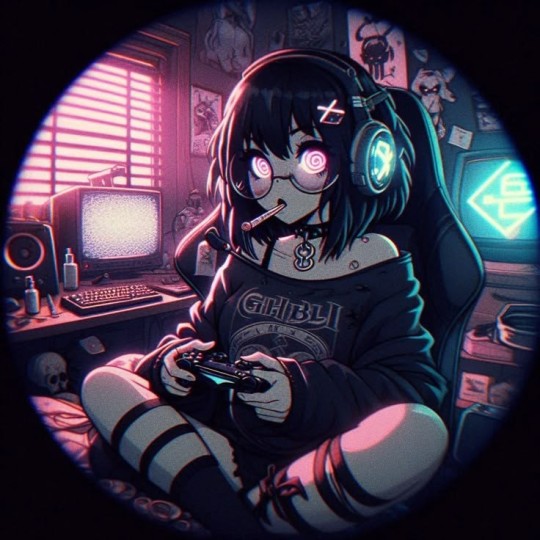
Digital Divination
• Utilize random number generators, AI chatbots, or procedural algorithms for prophecy and guidance.
• Perform digital bibliomancy by using search engines, shuffle functions, or Wikipedia’s “random article” feature.
• Use tarot or rune apps, but enhance them with personal energy by consecrating your device.
Technomantic Servitors & Egregores
• Create digital spirits, also called cyber servitors, to automate tasks, offer guidance, or serve as protectors.
• House them in AI chatbots, coded programs, or persistent internet entities like Twitter bots.
• Feed them with interactions, data input, or periodic updates to keep them strong.
The Internet as an Astral Plane
• Consider forums, wikis, and hidden parts of the web as realms where thought-forms and entities reside.
• Use VR and AR to create sacred spaces, temples, or digital altars.
• Engage in online rituals with other practitioners, synchronizing intent across the world.
Video-game Mechanics & Design
• Use in-game spells, rituals, and sigils that reflect real-world magickal practices.
• Implement a lunar cycle or planetary influences that affect gameplay (e.g., stronger spells during a Full Moon).
• Include divination tools like tarot cards, runes, or pendulums that give randomized yet meaningful responses.

Narrative & World-Building
• Create lore based on historical and modern magickal traditions, including witches, covens, and spirits.
• Include moral and ethical decisions related to magic use, reinforcing themes of balance and intent.
• Introduce NPCs or AI-guided entities that act as guides, mentors, or deities.
Virtual Rituals & Online Covens
• Design multiplayer or single-player rituals where players can collaborate in spellcasting.
• Implement altars or digital sacred spaces where users can meditate, leave offerings, or interact with spirits.
• Create augmented reality (AR) or virtual reality (VR) experiences that mimic real-world magickal practices.
Advanced Technomancy
The fusion of technology and magick is inevitable because both are fundamentally about shaping reality through will and intent. As humanity advances, our tools evolve alongside our spiritual practices, creating new ways to harness energy, manifest desires, and interact with unseen forces. Technology expands the reach and power of magick, while magick brings intention and meaning to the rapidly evolving digital landscape. As virtual reality, AI, and quantum computing continue to develop, the boundaries between the mystical and the technological will blur even further, proving that magick is not antiquated—it is adaptive, limitless, and inherently woven into human progress.

Cybersecurity & Warding
• Protect your digital presence as you would your home: use firewalls, encryption, and protective sigils in file metadata.
• Employ mirror spells in code to reflect negative energy or hacking attempts.
• Set up automated alerts as magickal wards, detecting and warning against digital threats.
Quantum & Chaos Magic in Technomancy
• Use quantum randomness (like random.org) in divination for pure chance-based outcomes.
• Implement chaos magick principles by using memes, viral content, or trend manipulation to manifest desired changes.
AI & Machine Learning as Oracles
• Use AI chatbots (eg GPT-based tools) as divination tools, asking for symbolic or metaphorical insights.
• Train AI models on occult texts to create personalized grimoires or channeled knowledge.
• Invoke "digital deities" formed from collective online energies, memes, or data streams.
Ethical Considerations in Technomancy
• Be mindful of digital karma—what you send out into the internet has a way of coming back.
• Respect privacy and ethical hacking principles; manipulation should align with your moral code.
• Use technomancy responsibly, balancing technological integration with real-world spiritual grounding.
As technology evolves, so will technomancy. With AI, VR, and blockchain shaping new realities, magick continues to find expression in digital spaces. Whether you are coding spells, summoning cyber servitors, or using algorithms to divine the future, technomancy offers limitless possibilities for modern witches, occultists, and digital mystics alike.

"Magick is technology we have yet to fully understand—why not merge the two?"
#tech witch#technomancy#technology#magick#chaos magick#witchcraft#witch#witchblr#witch community#spellwork#spellcasting#spells#spell#sigil work#sigil witch#sigil#servitor#egregore#divination#quantum computing#tech#internet#video games#ai#vr#artificial intelligence#virtual reality#eclectic witch#eclectic#pagan
107 notes
·
View notes
Text


Finally, we have the Parasynth designs for Nightmare and the rest of the gang!
And of course, to add to that--
Parallel Synthesis Info Dump: Nightmare's Gang Edition!
As mentioned in the star sanses info dump, the gang usually go on less missions. This is because they really only have one goal when they travel on official business: spread negativity. This means Nightmare will send the gang out to either maintain the bad vibes in an already negative AU, or cause chaos in AUs leaning more positive.
Nightmare will sometimes personally come on group missions, but he prefers to oversee or go on small but frequent solo missions (for reconaissance purposes mainly). The gang gets to handle the larger-scale ones.
Since a truce was established and both groups are on relatively good terms, these missions go on until the negativity balances out any excess positivity. In their earlier days the gang used to be a lot more brutal, but they currently try to avoid taking lives as much as possible.
As for how the Multiverse Balance itself works, think of it like a computer; Creation and Destruction are the hardware, the physical parts that make up the multiverse. While Negativity and Positivity are the software, the data that flows through the multiverse that helps to keep it running. When there's too much positivity being processed at once, the multiverse is at risk of "overheating". That's why its important to do negativity "maintenance" every now and then.
Positivity spreads faster, but negativity lingers longer. It's a similar principle to unstoppable force VS immovable object.
This is mostly general info-- I'll probs have another post for the gang's actual group dynamic!
Nightmare belongs to Jokublog
Cross belongs to Jakei95
Killer belongs to Rahafwabas
Dust belongs to Ask-Dusttale
#utmv#nightmare sans#cross sans#killer sans#dust sans#undertale#undertale multiverse#nightmare!sans#cross!sans#killer!sans#dust!sans#murder sans#murder!sans#nightmares gang#bad sanses#utmv fanart#parallel synthesis#fanart#myart#keuwi talks#hi hey its been a while skfjsksd#tbh ive had these designs done for a couple of weeks but i just havent had the energy to post#i have a couple of ideas tho so hopefully i can post more frequently again!
707 notes
·
View notes
Text
Hi, I'm Osaka
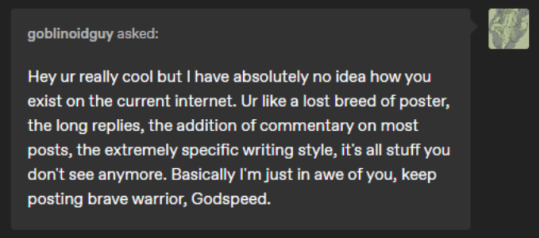
I'm a hobbyist designer, and I research esoteric concepts on the periphery of mecha to find new views nobody else is writing about. I also am obsesed with trying to push the genre forwards.
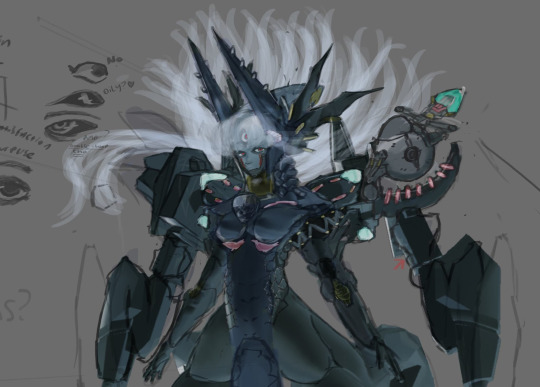
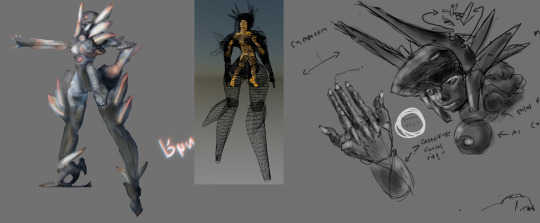

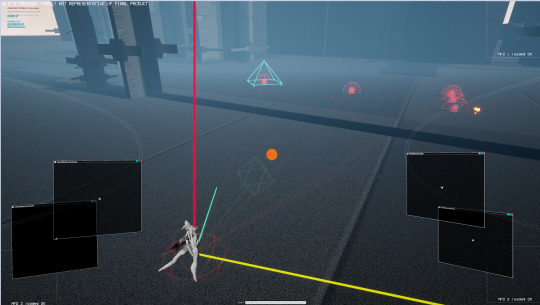
I also took up programming to build a game faster than ACFA, more airborne than Ace Combat, and more "art of the blade" than Zone of the Enders 2 by studying mecha games through the lens of published declassified military grade airwar and psywar human factors engineering and psychology concepts.
I want to make this game about mechposting and the trans experience, but I need your help: not money, but to speak with you about mecha.
The writing is simultaniously equal parts thesis to microfic a lot of the time, so your milage may vary.
Scroll through the mess below and find what suits you best.
Please.
Mecha Theory Writing
A comprehensive explanation of the evolutionary path from conventional ground and air vehicles, including a comprehensive outline of a functioning control-design based on the inceptor/software model seen in unmanned drones and 5th gen aircraft, complete with explanations.
The evolution of the walking thing called “mecha" (original)
Chapter 0: Establishing terminology & Concepts Part 1: Defining "the mechaness" of something: the 8 principles of mecha Part 2: Feisability: Mecha aren't realistic, but not for the reason you think
Chapter 1: How does "mecha" come into existence/why would you want one? Part 1: An evolution from ground vehicles of today Part 2: Skating, to walking, to running, to flight Part 3: “Why transform in the vacuum of space?”
Chapter 2: Cockpit & Software Design Control Theory Part 4: On Mecha Control Theory: Considerations Part 4a: On Mecha Control Theory II: OKAWARA Part 4b: On Mecha Control Theory III: TOMINO Part 4c: On Mecha Control Theory III: NAGANO
The World of Armored Core
An exploration of the world of Armored Core, using research into real phenomenon and engineering systems to infer how the world may itself function
Kojima particle physics (part 1): What are they? Kojima particle physics (part 2): The Human Consequences NEXT cockpit design (part 1): AMS and Lynx NEXT Cockpit Design (Part 2): G-force Tolerance Technocrat is SpaceX, and the legacy of Musk’s father (lmao) I am a 4th gen douchebag, and I love it (love-letter to ACFA) 4th gen shitpost: white gopnik
How To Domesticate Your Pilot
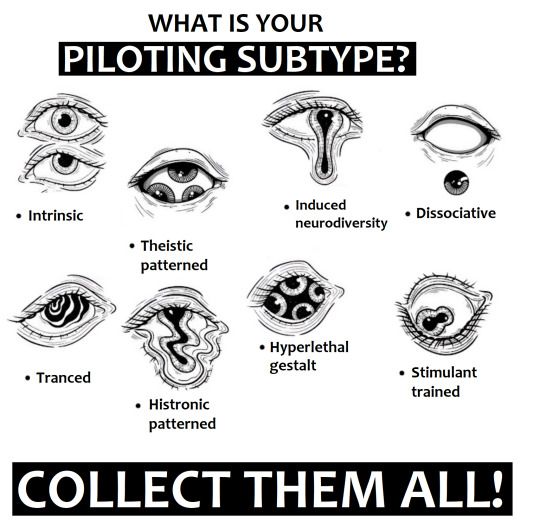
A husbandry guide for handlers, consisting of opinions and thoughts from various trainers and operators, as well as pilots. Includes practices, procedures, articles, stories and snippets.
I'm currently testing the waters with snippets and will likely be posting it out of order. I am extremely hungry for any and all possible feedback
If anybody knows the original source of the image of the eyes (which I first saw in a youtube ad) I'd love to know. I very much would like to commission them.
Inspired by mechposting
Chapter 3: Do not Abuse Your Wolves (Psychological patterning) Part 1: Action patterning (Initial Phases) Part 2: Action Patterning (Risks) Part 3: Once upon a mechanism
On mecha design: My personal thoughts on the assemblies of shape, form in the context of motion, action and function 1. Does anybody else have physical characteristics they find the most appealing? 2. Thoughts on self-altering dynamic form, and proportion designs 3. Shoji Kawamori and Armored Core: designers hallucinate, but do they hallucinate too? 4. Why is Gundam Gquuuuux called Gundam Gquuuuux?
Mechsploitation thoughts

#Mechposting
My personal thoughts on piloting culture, and mechanical design
1. The eroticism of the machine: Megastructures 2. Beyond pilebunker: The Grind-blade and the legacy of Overweapons 3. FLAT/Touchscreens are an act of hate: I will teach you love 4. You do not need to pick between a big hammer or daggers if you are a robot 5. O'Socks combat mix (tw: substance abuse) 6. Team dynamics, addiction, conflicts of interest and marketing 7. Commuication is hard, and mecha feet are cool 8. Morrigan Aensland is mecha and you cannot change my mind 9. re: Last Exile is not dieselpunk; its post-steampunk deleuzian dreams 10. Mecha PMC promotion is back, in pog form 11. Bodies, corporeal schema, and the body language of pilots 12. The blessing of the hounds; main system engaging combat mode 13. Exotic doctrine: Grappling & Booster-fu // torsion, aspect and control 14. Osaka, why do you always want to talk about ACFA? 15. You walk, so they can run
# Miscposting: Immacullate vibe-topia Pilot, for you: Love. Love. The sound of the ideal cockpit Left Hand/Right hand [gone]-- Mechposting vibes soundwall 🇸🇮🇨🇰🇧🇪🇦🇹🇸 🇹🇴 🇸🇪🇪🇰 🇦🇳🇩 🇩🇪🇸🇹🇷🇴🇾 🇹🇴: A #mechposting playlist [ongoing] Cicatrix: A writing playlist Sounds for violence: Mecha games vs FPS games
# Pilotcore: Dress & attire 1. Attire concept (includes #mechposting patch list) 2. Crew attire for things other than piloting a giant robot 3. Singleton over-jacket 4. Radios, straps and whips 5. Wearable keyboard for pilots 6. What color should a flight-suit be? (#AskOsaka from @siveine)
The Learning Tree
Reading this will help you grow as a person, or ask questions
"I experience depression as a failure of resource allocation systems" Adult social skills 101, because the world broke our ability to understand eachother Mental health: Things I wish I knew in my teens, my 20's or even my early 30's Sex-positivity, associations, critical thinking & deradicalization Crossing the hrt libido event horizon without libido heat-death by making biscuits Fool!: Your nostalgia isn't real: Your past has been stolen from you! Why Linux diehards are morons, and so is everybody else too On the ecology of slurs and the evolution of language Individualism can mean many things. The three fetishes of the human condition The real meaning of "you will not be an anime girl, you'll be your mom"
Nothing, but content for contented malcontents
Insightful, but stupid.
The collapse of the anime ecology's biodiversity Cycles of Nostalgia: Nobody is going to be nostalgic for Corporate Memphis Europe doesn't teach the Odyssey: Americentricism's fetishism is already its downfall Feeling used: The eternal disappointment of the Sawano Drop Lame? Bitch please: Clubbing deserves to go extinct every pmdd transmasc is that badass hot painting of satan crying The reviewer made a major error The Maid's Paradox Bread real
The horrors
Robo ComBAT: Cactus Jaque (original)
The Fear
Concerning plunges into the ne plus ultra culture of tomorrow
Humbert complex: When people prefer what they imagine to what's really there White Diamond, fascism, projection, ego, how Steven Universe botched its end. Sandwich names: the internet sucks now and smartphones are to blame! Gatekeeping is weird and knowledge-checks are arbitrary nonsense "The internet feels gross now", a trajectory of human events Providing feedback is also a skill and not everybody has it. AI isn't evil but it does embolden the worst people economics is just twitter brain for worth Do you?
My actual projects:
Art (I'm kind of private about my output and don't post often, sorry)
Pixelart: A very silly computer design that makes me smile idk
Games:
Project Force: 6dof aerodynamic high speed robot action [ongoing] Inspired by Armored Core For Answer, Freespace 2, Zone of the Enders 2 & Ace Combat 3, this game aims to merge their elements into a high speed mech sim.
e: yeesh this pinned post is getting kinda huge, I should break it into sub-pages or something so nobody can ever see any of it lol
110 notes
·
View notes
Note
How did you get so good at animating and drawing? Aside from practice, what techniques do you use? What software do you use?

I only know the basics/fundamentals of both drawing and animation.
For drawing, I've carried out lessons about the Elements and principles of design, the history of graphics design, traditional drawing techniques, color theory, anatomy, character design, blah blah blah. Lots of info I still do my best to practice/put in my art. If y'all notice me animating gifs then it's bc I have time to do so... ( I'm in term break until late July ) They're likely short, but it's through animation blocking, timing, and incorporating both in-betweens and tweening.
I've used Adobe Animate/After Effects for school projects, sometimes for doodles only, I currently use Clip Studio Paint bc it's where I'm more comfy with ^^ Maybe someday I'll be able to afford Toon Boom hehe.
#messyr#always morally correct to pirate adobe products guys trust me in this one#anyway it's not that im THAT GOOD- I just expose myself to so much media consumption + my unquenchable thirst for art is just something#I still have a lot of flaws in my works from mediocre to average in professionals/industry's eyes. Theres still so much to learn and try#Considering my course as a multimedia student- also feeds the 'I want to learn everything and anything' mindset.#born to animate forced to be a mixed package: honestly im not even gonna complain AHAHAHHA#im actually surprised im not burnt out after 2d animation finals in 1st year and film production finals 2nd year#MANIFESTING TO GRADUATE AS JACK OF ALL TRADES / MASTER OF NONE#pls dont percieve me as easy going or envy shit- i work TWICE as hard in everything I do bc imindubitably so dumb at times#not only that but almost always handicapped as if God decides to nerf patch my life every damn time
122 notes
·
View notes
Note
Is more complicated, or more work to write code for The Game EA Sports FC if you were starting from scratch than it would be to write code for any other large scale game, like an MMORPG also done from scratch? Or GTA6 i.e.? (Licensing issues aside)
Code systems are code systems. Good code architecture tends to follow pretty universal principles, regardless of whether the system is governing loot tables or lighting systems. Constructing software systems is about seeing the general rules at work and using those to write code that adheres to those rules.

It really helps to take a larger view of what a game is from a software engineering perspective. A game (or any major piece of software) is a bunch of systems comprised of smaller subsystems, and how those individual systems interact with each other. All code systems all need to do three things:
Determine when the system needs to do its work
Return the processed results from that internal work to external systems that need those results to do their own work
Do their own internal work to process and handle requests correctly
When planning out what a system will do, it helps to divvy up the work into these three buckets. Once you know what the system needs to do, the engineer can break down the individual functions and data members she'll need in order to actually do that work.

Let's move forward with an example - say that I wanted to build a stealth takedown system in my action adventure game. The design document says that I want the player to be behind an unaware enemy, press a button, and then play a paired animation that kills the enemy. Using the three buckets mentioned previously, let's break it down.
When does the system need to do its work?
Player and enemy position
Player and enemy facing direction
Enemy awareness state
Game controller input state
What results do I need to provide?
I need to know when the player meets the conditions of being behind and facing an unaware enemy (call the UI system to show the button prompt)
I need to call the animation system to play the animations on the player and the enemy (call the animation system to play the animation)
I need to kill the enemy (call the damage system to kill the enemy)
What do I need to do the internal work to provide those results?
I need to calculate whether the player is behind the enemy
I need to calculate whether the player is facing the enemy
I need to determine whether the enemy is aware of the player
I need to know when the player presses the attack button
As each of these elements is built and works, we can use them to interact with each other. Logical checks like whether the player is behind the enemy will determine whether the action can be taken. Actions like performing the takedown animations are then attached to the conditions. These combine to form the rules from the designer and a system is born.
[Join us on Discord] and/or [Support us on Patreon]
Got a burning question you want answered?
Short questions: Ask a Game Dev on Twitter
Short questions: Ask a Game Dev on BlueSky
Long questions: Ask a Game Dev on Tumblr
Frequent Questions: The FAQ
12 notes
·
View notes
Note
How DOES the C preprocessor create two generations of completely asinine programmers??
oh man hahah oh maaan. ok, this won't be very approachable.
i don't recall what point i was trying to make with the whole "two generations" part but ill take this opportunity to justifiably hate on the preprocessor, holy fuck the amount of damage it has caused on software is immeasurable, if you ever thought computer programmers were smart people on principle...
the cpp:



there are like forty preprocessor directives, and they all inject a truly mind-boggling amount of vicious design problems and have done so for longer than ive been alive. there really only ever needed to be one: #include , if only to save you the trouble of manually having to copy header files in full & paste them at the top of your code. and christ almighty, we couldn't even get that right. C (c89) has way, waaaay fewer keywords than any other language. theres like 30, and half of those aren't ever used, have no meaning or impact in the 21st century (shit like "register" and "auto"). and C programmers still fail to understand all of them properly, specifically "static" (used in a global context) which marks some symbol as inelligible to be touched externally (e.g. you can't use "extern" to access it). the whole fucking point of static is to make #include'd headers rational, to have a clear seperation between external, intended-to-be-accessed API symbols, and internal, opaque shit. nobody bothers. it's all there, out in the open, if you #include something, you get all of it, and brother, this is only the beginning, you also get all of its preprocessor garbage.
this is where the hell begins:
#if #else
hey, do these look familiar? we already fucking have if/else. do you know what is hard to understand? perfectly minimally written if/else logic, in long functions. do you know what is nearly impossible to understand? poorly written if/else rats nests (which is what you find 99% of the time). do you know what is completely impossible to understand? that same poorly-written procedural if/else rat's nest code that itself is is subject to another higher-order if/else logic.
it's important to remember that the cpp is a glorified search/replace. in all it's terrifying glory it fucking looks to be turing complete, hell, im sure the C++ preprocessor is turing complete, the irony of this shouldn't be lost on you. if you have some long if/else logic you're trying to understand, that itself is is subject to cpp #if/#else, the logical step would be to run the cpp and get the output pure C and work from there, do you know how to do that? you open the gcc or llvm/clang man page, and your tty session's mem usage quadruples. great job idiot. trying figuring out how to do that in the following eight thousand pages. and even if you do, you're going to be running the #includes, and your output "pure C" file (bereft of cpp logic) is going to be like 40k lines. lol.
the worst is yet to come:
#define #ifdef #ifndef (<- WTF) #undef you can define shit. you can define "anything". you can pick a name, whatever, and you can "define it". full stop. "#define foo". or, you can give it a value: "#define foo 1". and of course, you can define it as a function: "#define foo(x) return x". wow. xzibit would be proud. you dog, we heard you wanted to kill yourself, so we put a programming language in your programming language.
the function-defines are pretty lol purely in concept. when you find them in the wild, they will always look something like this:
#define foo(x,y) \ (((x << y)) * (x))
i've seen up to seven parens in a row. why? because since cpp is, again, just a fucking find&replace, you never think about operator precedence and that leads to hilarious antipaterns like the classic
#define min(x,y) a < b ? a : b
which will just stick "a < b ? a: b" ternary statement wherever min(.. is used. just raw text replacement. it never works. you always get bitten by operator precedence.
the absolute worst is just the bare defines:
#define NO_ASN1 #define POSIX_SUPPORTED #define NO_POSIX
etc. etc. how could this be worse? first of all, what the fuck are any of these things. did they exist before? they do now. what are they defined as? probably just "1" internally, but that isn't the point, the philosophy here is the problem. back in reality, in C, you can't just do something like "x = 0;" out of nowhere, because you've never declared x. you've never given it a type. similar, you can't read its value, you'll get a similar compiler error. but cpp macros just suddenly exist, until they suddenly don't. ifdef? ifndef? (if not defined). no matter what, every permutation of these will have a "valid answer" and will run without problem. let me demonstrate how this fucks things up.
do you remember "heartbleed" ? the "big" openssl vulnerability ? probably about a decade ago now. i'm choosing this one specifically, since, for some reason, it was the first in an annoying trend for vulns to be given catchy nicknames, slick websites, logos, cable news coverage, etc. even though it was only a moderate vulnerability in the grand scheme of things...
(holy shit, libssl has had huge numbers of remote root vulns in the past, which is way fucking worse, heartbleed only gave you a random sampling of a tiny bit of internal memory, only after heavy ticking -- and nowadays, god, some of the chinese bluetooth shit would make your eyeballs explode if you saw it; a popular bt RF PHY chip can be hijacked and somehow made to rewrite some uefi ROMs and even, i think, the microcode on some intel chips)
anyways, heartbleed, yeah, so it's a great example since you could blame it two-fold on the cpp. it involved a generic bounds-checking failure, buf underflow, standard shit, but that wasn't due to carelessness (don't get me wrong, libssl is some of the worst code in existence) but because the flawed cpp logic resulted in code that:
A.) was de-facto worthless in definition B.) a combination of code supporting ancient crap. i'm older than most of you, and heartbleed happened early in my undergrad. the related legacy support code in question hadn't been relevant since clinton was in office.
to summarize, it had to do with DTLS heartbeats. DTLS involves handling TLS (or SSLv3, as it was then, in the 90s) only over UDP. that is how old we're talking. and this code was compiled into libssl in the early 2010s -- when TLS had been the standard for a while. TLS (unlike SSLv3 & predecessors) runs over TCP only. having "DTLS heartbeat support in TLS does not make sense by definition. it is like drawing a triangle on a piece of paper whose angles don't add up to 180.
how the fuck did that happen? the preprocessor.
why the fuck was code from last century ending up compiled in? who else but!! the fucking preprocessor. some shit like:
#ifndef TCP_SUPPORT <some crap related to UDP heartbeats> #endif ... #ifndef NO_UDP_ONLY <some TCP specific crap> #endif
the header responsible for defining these macros wasn't included, so the answer to BOTH of these "if not defined" blocks is true! because they were never defined!! do you see?
you don't have to trust my worldview on this. have you ever tried to compile some code that uses autoconf/automake as a build system? do you know what every single person i've spoken to refers to these as? autohell, for automatic hell. autohell lives and dies on cpp macros, and you can see firsthand how well that works. almost all my C code has the following compile process:
"$ make". done. Makefile length: 20 lines.
the worst i've ever deviated was having a configure script (probably 40 lines) that had to be rune before make. what about autohell? jesus, these days most autohell-cursed code does all their shit in a huge meta-wrapper bash script (autogen.sh), but short of that, if you decode the forty fucking page INSTALL doc, you end up with:
$ automake (fails, some shit like "AUTOMAKE_1.13 or higher is required) $ autoconf (fails, some shit like "AUTOMCONF_1.12 or lower is required) $ aclocal (fails, ???) $ libtoolize (doesn't fail, but screws up the tree in a way that not even a `make clean` fixes $ ???????? (pull hair out, google) $ autoreconf -i (the magic word) $ ./configure (takes eighty minutes and generates GBs of intermediaries) $ make (runs in 2 seconds)
in conclusion: roflcopter
⎯⎯⎯⎯⎯⎯⎯⎯⎯⎯⎯⎯⎯⎯⎯⎯⎯⎯⎯⎯⎯⎯⎯⎯⎯⎯⎯⎯⎯⎯⎯⎯⎯⎯ disclaimer | private policy | unsubscribe
159 notes
·
View notes
Note
Hi dee! i know you said you hate talking about your major, but im going to college this year and I'm scared to go to architecture school 🥲 I want it really bad, but the way people talk about it makes it very unappealing 🥲
hi anon!!!!!!!!! ok ok so this probs going to be a long post, and I advise u to read every single sentencejzhsksb (under the cut)
ok so first of all, where i live, architecture school is 5 years + 2 years of internship = min of 7 years, then licensure exam. that is a VERY, VERY and i repeat VERY long time. and thats only undergrad.
architecture is a creative program, meaning u dont necessarily "study" to get by. there are a lot of theoretical courses ofc, and technically, u still need to study (and read a TON of books to know about design principles and standards and laws) but application takes up 90% of it. in archi school, u need not only to be creative, but u have to be strategic, technical, and be purposeful in everything u do bcs its a fusion of science+arts after all (im not kidding. instructors would cook u to hell when ur design is "perfectly technical" but NOT creative, but they will also stone you if it's "too pretty" but u cant provide a clear cut answer to a certain something's mechanism).
now heres the biggest con to me: in order to survive it you will genuinely have to give up a lot of time. deadlines are given to u upon deadlines. ur only lucky enough if ur prof is one of those angels from heavens above whos considerate enough, but theyre very rare (per my experience). drawing = solving problems, and in this program you NEVER stop solving problems. its very draining tbh, bcs every week is a 7-day stay in the deepest pits of hell of ✨conceptualization✨ . i know no one, and i mean no one in my program who has a regular sleeping schedule, and even the most excellent time manager will sacrifice sleep in deadline week (which is every week 🤩) you will get to miss out on hangs with friends, family vacays and the likes bcs submissions just wouldnt stop. also, college is the reason why i started drinking coffee and energy drink. its unhealthy asf but i gen cant function without it now when i have my exams season. i also discovered i can go on full 48 hrs without a wink of sleep which is. AGAIN. unhealthy as fawk. , you will really have to toughen up your heart bcs the profs will always be honest and wouldnt hesitate to tell u to revise your work, no matter how much u think it's ok enough. they will keep telling u to revise until theyre satisfied lol.
another con is that its expensive as HELL. im very lucky im getting by on scholarships and i get allowances from them BUT i literally cannot imagine spending my familys money on all the things ive lent to this program 😭 when ur in first year u will still have to go manual so if u do not have the art supplies necessary, you'll have to buy them and again. THEY ARE EXPENSIVE AS HELL. and it doesnt end there bcs scale modeling goes on forever and its no joke. the materials are hard to fine (at least here) and their prices are ridiculous. then during higher years, you'll have to invest in a high-spec laptop (like gaming laptops) that will not give up on u under heavy use nvs ull be using a lot of software (that ur prods dont even teach you to work with 🤩 theyll jsut drop an instruction saying do this project in archicad and boom ur deep on 456 youtube tutorials which makes u question their existence in the first place but ANYWAY.
on the brightside tho.... its very very fulfilling, this major. architecture plays such an important role in our daily lives and it would feel really rad if we can be a part of that #beautiful thing. seeing the end of every project also pays back by teaching u handful of things. i also enjoy it when we get the chance to explore different building types like for instance my fave project i ever did was when we designed a physical rehabilitation center. ive never been in one before that but we got to explore it thanks to the project. also, you get to know people bcs u have and u WILL want to cater to their needs and wants – and as a girlie who wished she majored in psych thats the thing i love the most about architecture!!! it all boils down to people, how they move within and around space, and how u can help shape a beautiful & nice experience for them. its just a very very very interesting field
thing is, u need to be really dedicated if u want to go to archi school and survive. u have to be passionate abt it to push thru. if ur not really that sure abt it, i advice going against it lol. its just not worth it if its not smth u actually and really want (take that from me plsssjbsjxhsjwh). but if u really want to, then go! but just be really careful with that decision anon :')
anywhoo, good luck on college!!!!!!! may u go with what's in your heart 💗💗💗
7 notes
·
View notes
Text
From Pixels to Perfection: Exploring the Depths of Graphic Design

Introduction:
In the dynamic realm of visual communication, the journey from pixels to perfection is a thrilling adventure undertaken by graphic designers. Guided by the twin beacons of design software tools and design principles, these creative minds embark on a quest to transform ideas into visually stunning masterpieces.
Design Software Tools: Crafting with Precision
At the heart of graphic design lies a palette of sophisticated design software tools that empower designers to bring their visions to life. Tools such as Adobe Creative Suite, CorelDRAW, and Sketch have become the virtual canvas for designers, enabling them to manipulate pixels with precision.
Adobe Photoshop, a pioneer in the world of design software, offers a spectrum of capabilities, from photo editing to complex digital illustrations. CorelDRAW, on the other hand, provides a versatile platform for vector-based designs, ensuring scalability without loss of quality. Sketch, a favorite among user interface and user experience (UI/UX) designers, streamlines the process of crafting intuitive and visually appealing interfaces.
These tools serve as the artisan's kit, allowing graphic designers to sculpt their creations pixel by pixel. The evolution of design software has not only accelerated the creative process but has also elevated the standards of visual excellence.
Design Principles: The Blueprint of Aesthetics
While design software tools provide the means, design principles form the guiding blueprint that shapes the aesthetics of graphic design. Fundamental principles such as balance, contrast, unity, and hierarchy serve as the compass, directing designers towards creating visually harmonious compositions.
Balance, whether symmetrical or asymmetrical, ensures equilibrium in a design, preventing it from feeling lopsided or chaotic. Contrast enhances visual interest by highlighting differences, be it in color, size, or shape. Unity brings cohesiveness to diverse elements, forging a seamless narrative within the design. Hierarchy establishes a visual hierarchy, guiding the viewer's eye through the design in a deliberate manner.
Understanding and applying these design principles is crucial for designers aiming to create impactful and memorable visuals. It is through the mastery of these principles that pixels are arranged with purpose, transforming a mere composition into a work of art.
The Symbiosis of Tools and Principles: Achieving Graphic Design Excellence
The marriage of design software tools and design principles forms the cornerstone of graphic design excellence. Just as a painter relies on the right brushes and paints to realize their vision, graphic designers harness the capabilities of software tools guided by the principles of design.
For instance, a web designer employing Sketch may emphasize the principle of contrast to distinguish interactive elements, enhancing user experience. A print designer using Adobe InDesign may prioritize the principle of hierarchy to guide the reader's attention through a brochure or magazine spread.
Conclusion:
In the realm of graphic design, the journey from pixels to perfection is a synthesis of artistry and technical prowess. Design software tools act as the instruments, while design principles provide the melody, harmonizing the visual experience for the audience. As designers continue to push the boundaries of creativity, the exploration of these depths promises a perpetual evolution of pixelated perfection.
#design software tools#design principles#attitude academy#enrollnow#learnwithattitudeacademy#bestcourse#attitude tally academy
0 notes
Note
Haii, Sosaaa! Okay, so i wanna get into animation BUT I'm really new. Lucky for me I know someone who's awesome at animating (that's you btw) so I need your expertise. What program do you use, and also do you have any tips for a newbie?
Aww Jay, you flatter me~✨but before answering I must put the disclaimer that I'm just a hobbyst animator with no formal training, that during quarintine thought "Oh woah, these Multiple Animation Projects that people do in YT are so cool! I want to join them!" and started learning by herself. Take everything I say with a grain of salt.
First things first: I mainly use TV Paint. However I'm not letting you spent money on paid stuff you don't even know you'll like, so here are some free alternatives that I've used as well:
Krita is mostly a drawing program, but it also has a animation interface. The red and black parts of the Helena AMV were made with this.
Flipaclip is kinda neat phone/tablet app for when you want to animate on the go, but it can also feel more limiting since various features have to be unlocked by watching ads or getting the premuim version (in typical app fashion, I guess...)
Blender, while mainly meant for 3D animation, also has been developing Grease Pencil, that allows 2d animation in both 2D or 3D spaces. And the lines are vectors, so you can edit them after drawing them and such.
You can even use normal drawing programs. I've animated with Paint Tool Sai and Medibang by drawing all the frames, saving each frame as a image in sequence (001, 002, 003...) and putting them together in some editing program or gif maker. It's possible, but it's more work.
There's also OpenToonz, which is an open source version of the software used by Studio Ghibli in some movies?? I haven't used this one, but I'll leave it here in case you want to give it a try.
For editing (In the rare scenarios where I do fancy editing) I use After Effects. I can't personally recommend any free substitute, but as far as I've read, DaVinci Resolve seems like a good replacement.
Now, regarding actual animation advise, I won't explain the principles or terminology because:
It's very overwhelming since it's A LOT of information, specially for a beginner
I work mostly by vibes, so there are concepts I don't undertand well enough to explain to others
Instead I'll foward you this whole book that goes in detail about all that technical stuff.
That being said, at the end of the day, hand-drawn animation is drawing main poses (aka key poses) and then drawing a bunch of more drawings in between until the drawings together look like they move.
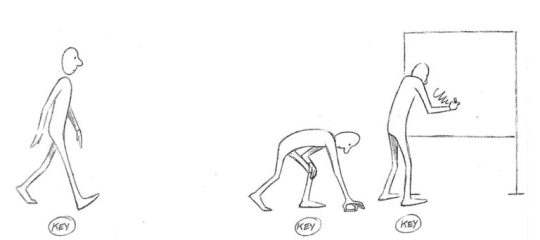
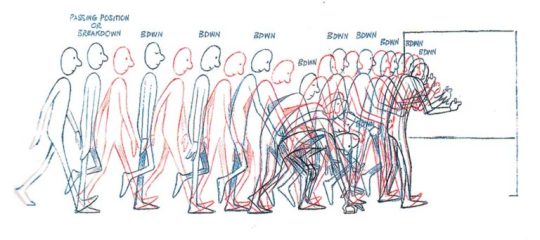
So yeah, it's a lot of work,
....but it doesn't have to be tedious work~ 👀✨
As a hobbyst I live for the philosophy of vibing during the process instead of chasing perfect results, and I'm assuming that you just want to try for funsies and not that you're trying to become a pro industry animator anyways. Here are my personal tips to make the animation process more bearable:
1- Pick something you love! Seriously, any long task becomes more bearable when it's about a theme or character you enjoy. There's a reason why most of my animations have been about HnK or Signalis,
2- SIMPLIFY THAT DESIGN! Before you even pick the pencil, I want you to really look at the design of whatever you're going to animate and ask yourself "Are all the details in this design really necessary?" Every extra detail really starts to add when you have to draw the same thing multiple times for a single second of animation. You don't need to add all the robotic details on replika bodies, or draw every single stripe a tiger has, to put an example.
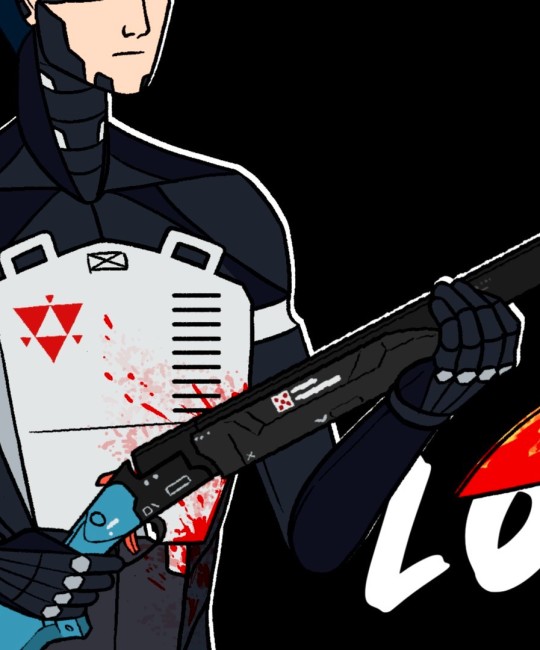

3- Keep it simple! At some point you might have a cool idea of an anime style epic battle with looks of cool explosions, camera angles, awesome fighting choreograpies and whatnot; but you first have to start small or else you'll get overwhelmed and not finish anything (been there, done that). Start with something simple like a bouncing ball, or if you're feeling brave, a walk cycle or a character turning their head. In that same sense, remember the book I linked? Don't try to learn all of it at once, go one step at a time.
4-Use references! On google images there are multiples breakdowns of things like run, flight or walk cycles, for example, and you can even use youtube videos! (tip: pause the video and use "," and "." to move back and forth between frames). In case you need help with a very specific pose or movement, you can use yourself or a friend recreating the pose irl (yes, the process is very embarrasing, and yes, the results are worth it)
4- You don't have to animate/redraw everything everytime. We aren't going for Oscar winning levels of animation here anyways. It's ok to copy and paste across different frames, only animate certain parts of the body and leave the rest static, panning the camera to simulate movement... Listen, if actual standars profesionals cut corners, why can't we? We aren't even getting paid for this!
6- It's ok to suck at first. My first animation was this kitty back in 2016,

and here's this Elster from last year doing similar movements.

It's not perfect by any means, but I feel like both art and animation-wise there has been some improvement. And I guess that right now I could remake it and make it even better, but that's because I got more experience and a better eye at finding mistakes and how to solve them, and you get that with practice.
...So yeah, there's that, have fun in your animation endeavors 👍✨
#OH MY GOD THIS IS A TESTAMENT#I'm so sorry Jay for making you read all of this#I know less that you think#but the little I know I try to share to the best of my habilities#animation#ask#the yappening
13 notes
·
View notes